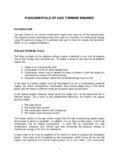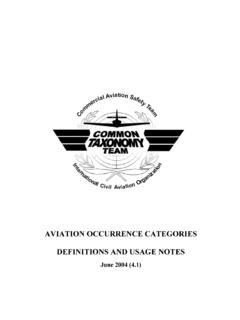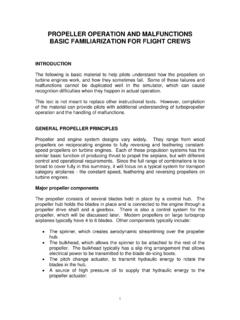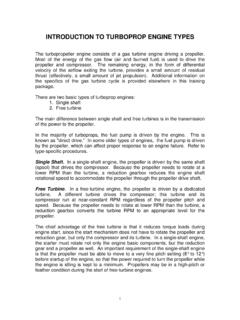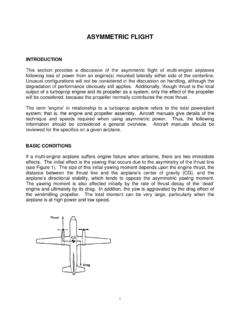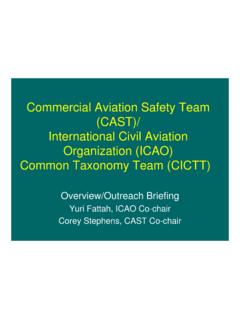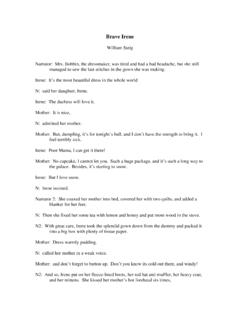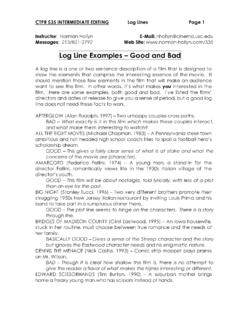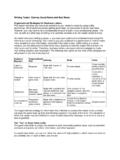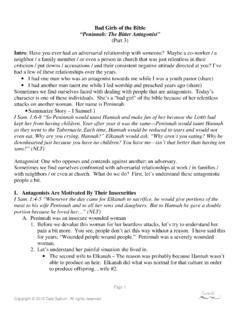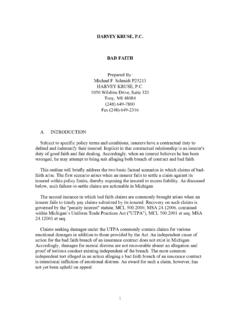Transcription of AIRPLANE TURBOPROP ENGINES BASIC …
1 1 AIRPLANE TURBOPROP ENGINES BASIC FAMILIARIZATION INTRODUCTION Many of today's airplanes are powered by TURBOPROP ENGINES . These ENGINES are quite reliable, providing years of trouble-free service. However, because of the rarity of TURBOPROP engine malfunctions, and the limitations of simulating those malfunctions, many flight crews have felt unprepared to diagnose engine malfunctions that have occurred. The purpose of this text is to provide straightforward material to give flight crews the basics of AIRPLANE engine operational theory.
2 This text will also provide pertinent information about malfunctions that may be encountered during the operation of TURBOPROP -powered airplanes . It is not the purpose of this text to supersede or replace more detailed instructional texts or to suggest limiting the flight crew's understanding and working knowledge of AIRPLANE turbine engine operation and malfunctions to the topics and depth covered here. Upon completing this material, flight crews should understand that some engine malfunctions can feel and sound more severe than anything they have ever experienced; however, the AIRPLANE is still flyable, and the first priority of the flight crew should remain "fly the AIRPLANE .
3 " PROPULSION Figure 1 showing balloon with no escape path for the air inside. All forces are balanced. Propulsion is the net force that results from unequal pressures. Gas (air) under pressure in a sealed container exerts equal pressure on all surfaces of the container; therefore, all the forces are balanced and there are no forces to make the container move. 2If there is a hole in the container, gas (air) cannot push against that hole and the gas escapes. While the air is escaping and there is still pressure inside the container, the side of the container opposite the hole has pressure against it.
4 Therefore, the net pressures are not balanced and there is a net force available to move the container. This force is called thrust. The simplest example of the propulsion principle is an inflated balloon (container) where the stem is not closed off. The pressure of the air inside the balloon exerts forces everywhere inside the balloon. For every force, there is an opposite force, on the other side of the balloon, except on the surface of the balloon opposite the stem. This surface has no opposing force since air is escaping out the stem.
5 This results in a net force that propels the balloon away from the stem. The balloon is propelled by the air pushing on the FRONT of the balloon. Figure 2 showing balloon with released stem. Arrow showing forward force has no opposing arrow. The simplest propulsion engine The simplest propulsion engine would be a container of air (gas) under pressure that is open at one end. A diving SCUBA tank would be such an engine if it fell and the valve was knocked off the top. The practical problem with such an engine is that, as the air escapes out the open end, the pressure inside the container would rapidly drop.
6 This engine would deliver propulsion for only a limited time. The turbine engine A turbine engine is a container with a hole in the back end (tailpipe or nozzle) to let air inside the container escape and, thus, provide propulsion. Inside the container is turbomachinery to keep the container full of air under constant pressure. A TURBOPROP engine extracts energy from the escaping air to drive a propeller. 3 Figure 3 showing our balloon with machinery in front to keep it full as air escapes out the back for continuous thrust.
7 COMPONENTS OF A TURBINE engine The turbomachinery in the engine uses energy stored chemically as fuel. The BASIC principle of the AIRPLANE turbine engine is identical to any and all ENGINES that extract energy from chemical fuel. The BASIC 4 steps for any internal combustion engine are: 1. Intake of air (and possibly fuel). 2. Compression of the air (and possibly fuel). 3. Combustion, where fuel is injected (if it was not drawn in with the intake air) and burned to convert the stored energy. 4. Expansion and exhaust, where the converted energy is put to use.
8 These principles are exactly the same ones used to make a lawn mower or automobile engine run. In the case of a piston engine , such as the engine in a car or lawn mower, the intake, compression, combustion, and exhaust steps occur in the same place (the cylinder head) at different times as the piston goes up and down. In the turbine engine , however, these same four steps occur at the same time but in different places. As a result of this fundamental difference, the turbine has engine sections called: 1.
9 The inlet section 2. The compressor section 3. The combustion section 4. The exhaust section. The practical axial flow turbine engine The turbine engine in an AIRPLANE has the various sections stacked in a line from front to back. As a result, the engine body presents less drag to the AIRPLANE as it is flying. The air enters the front of the engine and passes essentially straight through from front to back. On its way to the back, the air is compressed by the 4compressor section. Fuel is added and burned in the combustion section, then the air is exhausted through the exit nozzle.
10 The laws of nature will not let us get something for nothing. The compressor needs to be driven by something in order to work. Just after the burner and before the exhaust nozzle, there is a turbine that uses some of the energy in the discharging air to drive the compressor and most importantly for propulsion the propeller. There is a long shaft connecting the turbine to the compressor ahead of it, and the propeller at the front. Propeller Compressor combustor turbine nozzle Figure 4 showing the BASIC layout of a TURBOPROP propulsion system.
